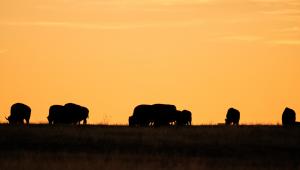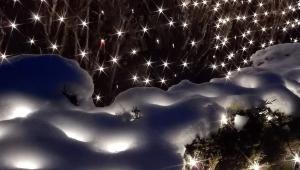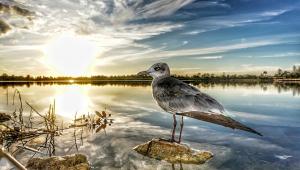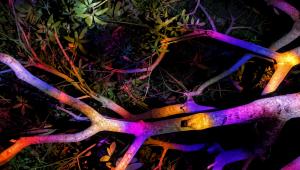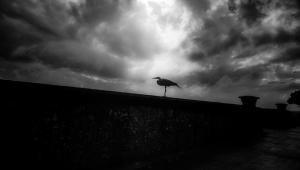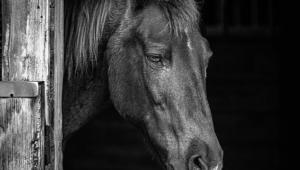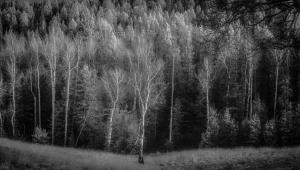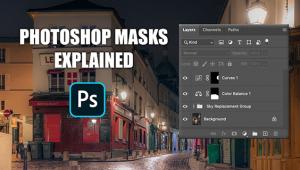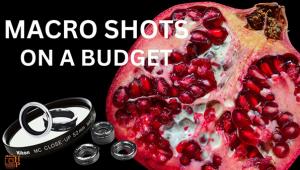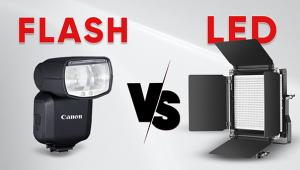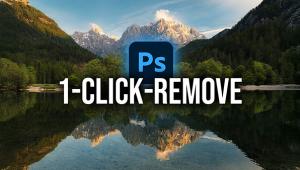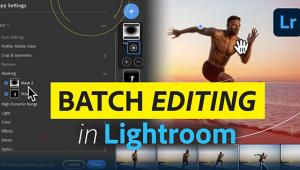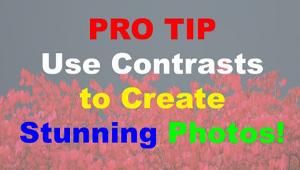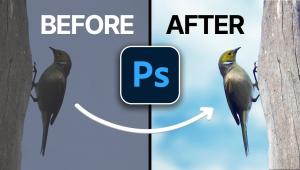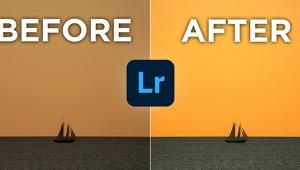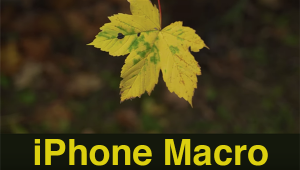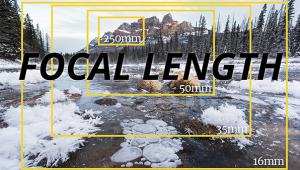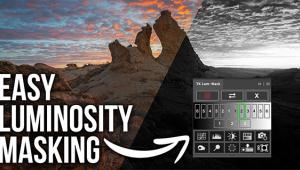Digital Help
Q&A For Digital Photography
Digital Help is designed to aid you in getting the most from your digital photography,
printing, scanning, and image creation. Each month, David Brooks provides solutions
to problems you might encounter with matters such as color calibration and management,
digital printer and scanner settings, and working with digital photographic
images with many different kinds of cameras and software. All questions sent
to him will be answered with the most appropriate information he can access
and provide. However, not all questions and answers will appear in this department.
Readers can send questions to David Brooks addressed to Shutterbug magazine,
through the Shutterbug website (www.shutterbug.com), directly via e-mail to:
editorial@shutterbug.com
or fotografx@mindspring.com
or by US Mail to: David Brooks, PO Box 2830, Lompoc, CA 93438.
--George Schaub
Current Scanner Choice Strategy
Q. I am an amateur film photographer, and am considering the purchase of a scanner
for my 35mm negatives and slides as well as my 6x6 120 transparencies and negatives.
Also less important is that I use other formats such as 110 and 126.
I have several questions, but here are the main ones: If a scanner will scan
a 4x5 negative, why won't it scan a 120 6x6 or, for that matter, a 126
or 110 negative? I understand that in some machines, or maybe all of them, that
some of type of negative holder is used. If that is the situation, is there
a private vendor who makes such after-market holders?
There are few places in the Seattle area that are known to stock more than a
few models of scanners, and thus it is difficult to speak with anyone who has
a concept of what they sell. I have turned to the Internet, where much of my
film is purchased, and thus have found some suppliers like B&H and Adorama
who stock the scanners.
One scanner that I am interested in is the Microtek 6100, as it seems to be
in my price range. While I would like your opinion on the machine, what I should
be looking for is more important. As a point of interest, the 6100 interests
me because it does have negative holders for 120 film, but also because of the
large amount of software bundled with it.
The new Microtek i900 might be the machine for me, and while the estimated cost
is reasonable, it might be out of my immediate price range. There seems to be
a shortage of the machines because the stores that claim to have them show
out-of-stock situations, and the Microtek website does not now list the machine,
nor the 6100 in their product line.
I am learning to sell some of my photography because of my semi-retired situation,
and need to use my existing equipment to better control some of my production
costs. Have considered digital, but for now, film is my medium of choice. There
are probably many people who are approaching digital imaging this way and may
find your answers beneficial. Thank you.
Ralph
A. First of all, Glazer's Camera in Seattle has some
good knowledgeable people covering digital. I lived in Seattle for six years
and always had confidence in working with them.
I myself use two kinds of scanners for film scanning. My current choice for
35mm film is Minolta's DiMAGE Scan Elite 5400, which also would be best
for even smaller format sizes. The easiest way to handle 110 or 126 with a dedicated
35mm scanner is to use either Gepe or Wess Plastic Mounts (glassless) that are
2x2 for 35mm projectors, and have a window size in the mount for 126 or 110
film frame sizes.
For larger sized film like all 120 sizes plus 4x5, the best quality at a reasonable
cost in scanners currently are Epson's Perfection 4870 Photo and Pro models.
Although I am favorable to Microtek scanners generally, I have not tested and
cannot recommend the 6100. As for the ScanMaker i900, please see my review in
the December 2004 issue.
The Same Shopping List May Not Be Right For Everyone
Q. I work at an eye research institute. Our ex-director (who is also a scientist)
has decided that since he's close to retiring he wants to have his 40+
years of data archived. Some will be used for publication and some (he'll
be using PowerPoint) will be used for lecture tours, but regardless (all) will
need to be archived!
Based on your advice, I plan to purchase the Microtek 9700L scanner to scan
text plus the color and black and white anatomy drawings--these are roughly
11x14. Sound good?
For all 35mm color mounted slides, 35mm color negatives (may include some 35mm
black and white negatives), I plan to purchase the Microtek ArtixScan 4000tf.
But, what do you think about the Minolta DiMAGE Scan Elite 5400 (yes, it has
the Digital ICE3 dust and scratch remover). The number of black and white negatives
and slides may be small so I could have these done outside. Any thoughts?
I also plan to purchase a new computer: a 1.6GHz Power Mac G5 with a 23"
flat panel screen (Apple Cinema HD display). I was thinking of getting GretagMacbeth's
Eye-One Pro bundle to calibrate the scanners and printers. What do you think
of this system?
As for a printer, I was leaning toward the i9100 Canon, but I'm not sure.
I know this printer prints 13x19. Is this the best one for the job? Have I forgotten
anything?
Maria Mejia
A. Regarding scanning 35mm, most service bureaus that do quality
scanning usually will not scan color negatives. I think that the output of consumer
photo service scanning for the amateur market for color negatives may not provide
the quality you may require, especially in color accuracy. So you may be better
off scanning all the 35mm yourself. In that case, I would recommend the Minolta
over the Microtek as I think you will find that if the slides and negatives
are not pristinely clean that Digital ICE will be invaluable to produce clean
scan results.
I cannot in any way fault your choice of a computer. However, if color accuracy
is essential to your work, and I assume it would be, I would suggest not getting
an Apple LCD Cinema display. Although I use professional Sony 21" CRT
monitors myself, the only model Sony is now selling is the Artisan and at $1795
I think it is overpriced, although it comes with a built-in sensor for calibration
and profiling. The alternate I would consider is the NEC/Mitsubishi 22"
Diamond Pro CRT monitor. And for monitor calibration and profiling I would suggest
the ColorVision Spyder and PhotoCAL software. It does an excellent job at a
reasonable cost.
For scanners, particularly for the first year of use and even more if not used
everyday, the manufacturer's canned profile that is installed with the
driver software is quite adequate to obtain accurate input color quality. And
if you are going to get a printer, particularly an Epson, the canned profiles
installed by the printer driver software installation are quite adequate as
long as you use paper made for and sold by the printer manufacturer. (Some third-party
paper suppliers also provide custom profiles for their papers for many Epson
higher-end printers and some others as well.) The Canon i9100 I reviewed some
months ago has been replaced with the i9900. I recently tested the i9900 for
Shutterbug; it is even more photo realistically accurate in the color it reproduces.
(See my review in the October 2004 issue or on our website at: www.shutterbug.com.)
A System Upgrade May Also Require Driver Upgrades
Q. I have an Acer AcerScan Prisa 620P and recently bought a new computer that
has Windows XP and it will not load onto my computer. Do I need different software,
or what?
Trish Henry
A. Very often software drivers for scanners and printers have
to be replaced with new versions when you upgrade from the older x86 versions
of Windows to XP. First you should try to contact Acer on the web and possibly
if they have a website with support you can download a new driver. Go to the
following link and click on "support": http://us.acer.com.
If Acer does not have an XP driver for your scanner model, there is another
option. Go to LaserSoft (www.silverfast.com) and see if they have a version
of SilverFast SE that will run your scanner model.
Is A Medium Format Film Camera Still An Advantage In This Digital Age?
Q. I have been reading your articles in Shutterbug for some time and I believe
I even have a book you wrote on lighting quite some time ago. I really enjoy
your opinions and comments on photography.
By being careful and perfecting my technique can I get better tonality on large
prints in both black and white and color by using a fine-grained film like the
new Astia for color and
T-Max 100 for black and white? Would it be better to use a high-quality 35mm
camera and lens, like a Leica, and dedicated scanner, like the Minolta 5400,
or will my Digital Rebel outperform them? Or, as an alternative, would a medium
format camera with high-quality lenses, like a Mamiya 7II in 6x7 or a Horseman
6x9 VHR, be substantially better than either of the other two options? And my
final question is, do you think I am missing the boat completely and know of
a fourth option that would be better than any of the earlier options?
Jerry Hyman
A. I have a Canon EOS Digital Rebel for my personal use and have been quite impressed with its performance. However, it does not capture enough image information to be fully competitive with my Canon EOS cameras using medium speed films, or even all of the old stuff I shot on Kodachrome many years ago. But then you bring up one of my favorite cameras from the past, which I used for many years, the Horseman 6x9 VHR. For landscapes and similar subjects there was nothing better for prints up to 20x30" size. In addition, digitizing 6x9 film images can be easily and affordably done by scanners like the Epson Perfection 4870 Pro. This combination produces really fine digital image files.
- Log in or register to post comments

